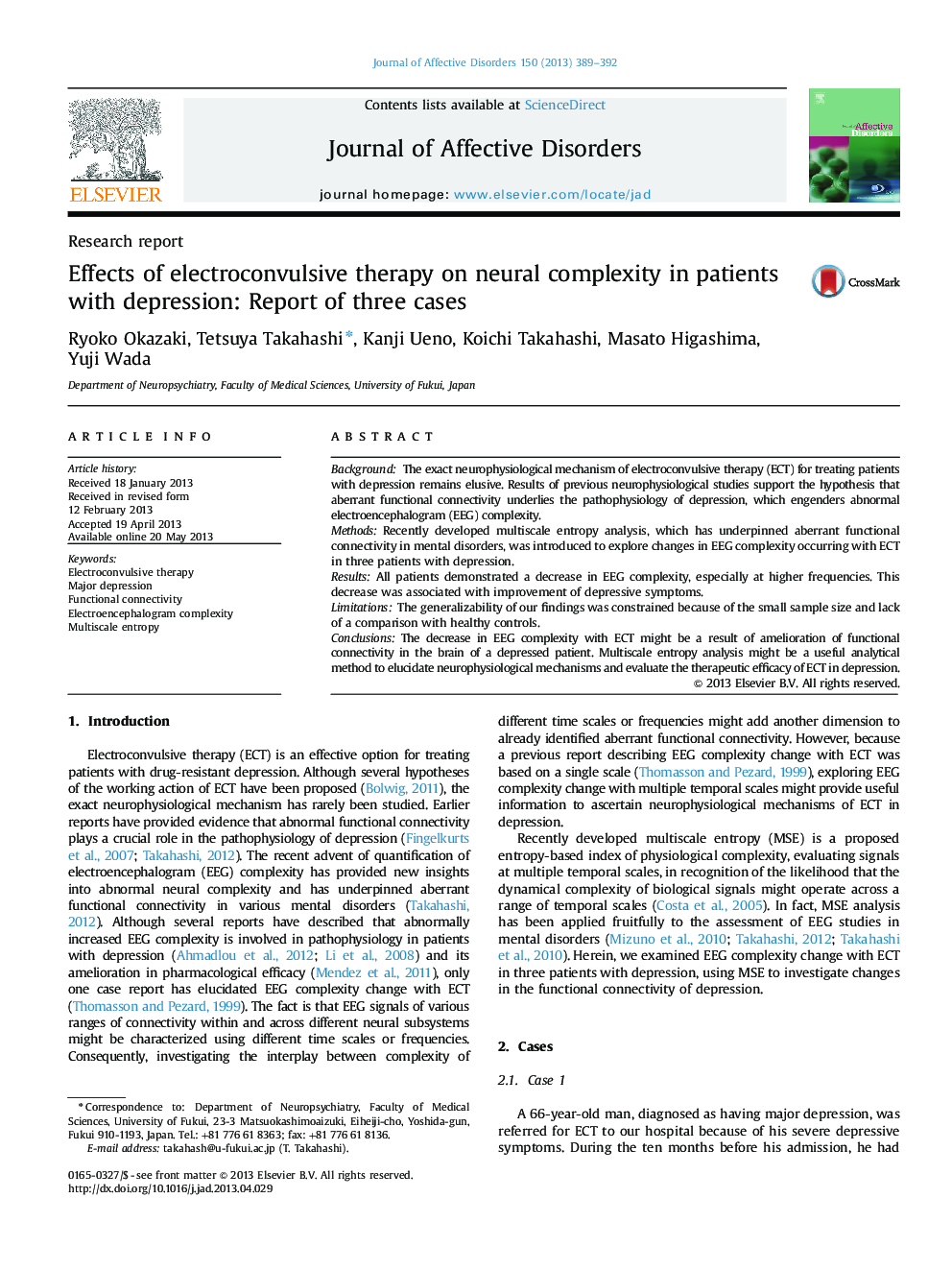| Article ID | Journal | Published Year | Pages | File Type |
|---|---|---|---|---|
| 6234257 | Journal of Affective Disorders | 2013 | 4 Pages |
BackgroundThe exact neurophysiological mechanism of electroconvulsive therapy (ECT) for treating patients with depression remains elusive. Results of previous neurophysiological studies support the hypothesis that aberrant functional connectivity underlies the pathophysiology of depression, which engenders abnormal electroencephalogram (EEG) complexity.MethodsRecently developed multiscale entropy analysis, which has underpinned aberrant functional connectivity in mental disorders, was introduced to explore changes in EEG complexity occurring with ECT in three patients with depression.ResultsAll patients demonstrated a decrease in EEG complexity, especially at higher frequencies. This decrease was associated with improvement of depressive symptoms.LimitationsThe generalizability of our findings was constrained because of the small sample size and lack of a comparison with healthy controls.ConclusionsThe decrease in EEG complexity with ECT might be a result of amelioration of functional connectivity in the brain of a depressed patient. Multiscale entropy analysis might be a useful analytical method to elucidate neurophysiological mechanisms and evaluate the therapeutic efficacy of ECT in depression.
